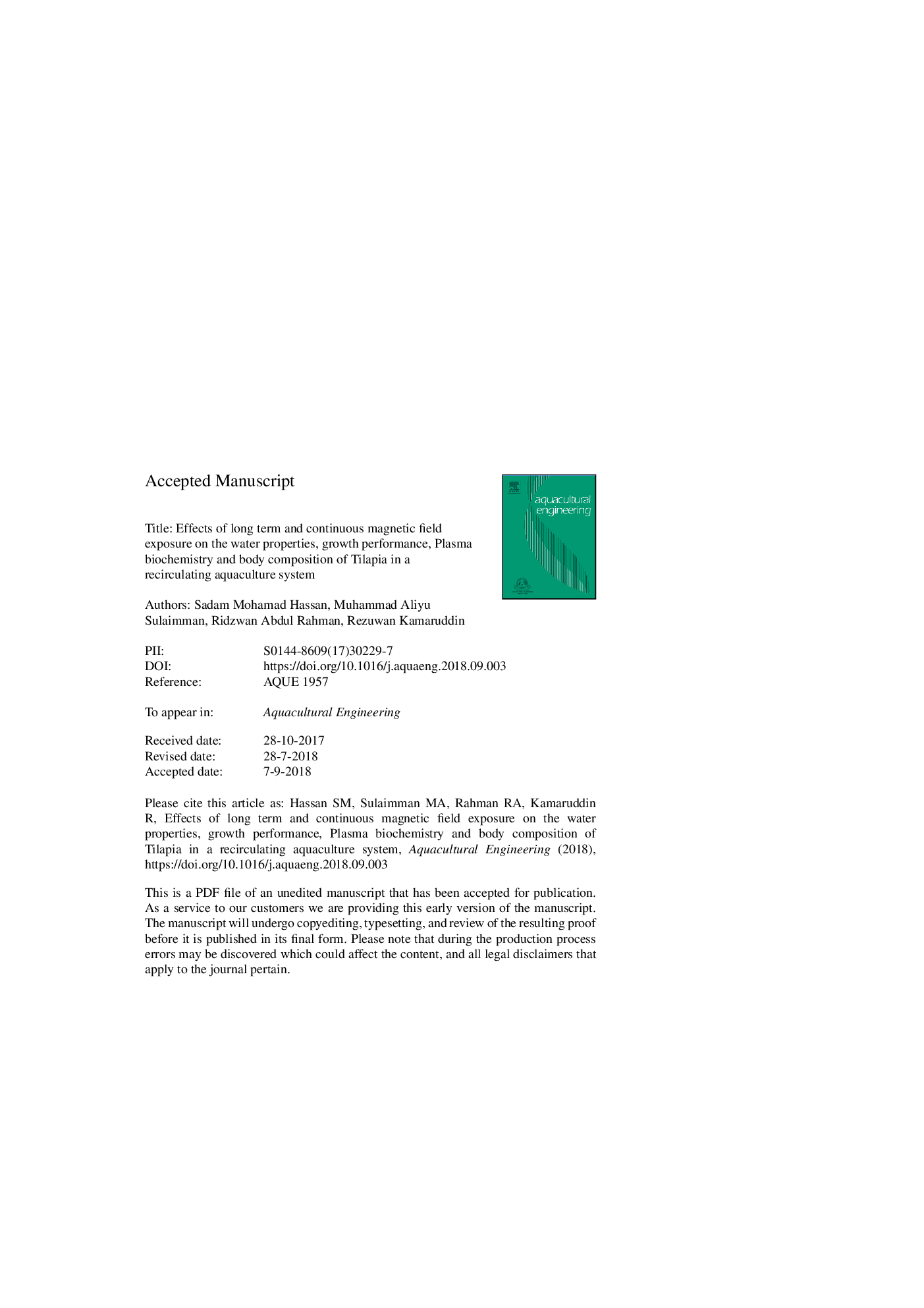| Article ID | Journal | Published Year | Pages | File Type |
|---|---|---|---|---|
| 11033208 | Aquacultural Engineering | 2018 | 23 Pages |
Abstract
A 70-day study was conductedto determine the effects of continuous exposure of magnetized water on red hybrid tilapia (Oreochromis sp.). Triplicate groups of tilapia (7.16â±â0.05âg) were tested with increasing amounts of magnetized water intensity (0.00, 0.10, 0.15 and 0.20âT). At the end of the experiment, the growth, feeding efficiency, whole-body proximate composition, water quality, and plasma parameters were measured. Although the survival was unaffected by the magnetised water level, the weight gain and specific growth rate significantly increased (Pâ<â0.05) as magnetised water intensity increases from 0.00âT to 0.15âT, then dropped (Pâ<â0.05) with increasing magnetised water at 0.20âT. The best feed conversion ratio (1.14) was achieved at 0.15âT level. The whole body proximate content, hepatosomatic index (HSI) and viscerosomatic index (VSI) were unaffected by the magnetised water intensity. However, serum electrolyte decreased with increasing tesla intensity. A similar pattern was found for the blood glucose content which was significantly lower in the 0.20âT group, serum aspartate aminotransferase (AST) and calcium ions show an opposite trend while no differences were detected for serum triglyceride, phosphate and total protein. Based on the growth, water properties and serum biochemistry, it was concluded that magnetised water at 0.15âT intensity may improve tilapia growth in Recirculating aquaculture system.
Related Topics
Life Sciences
Agricultural and Biological Sciences
Aquatic Science
Authors
Sadam Mohamad Hassan, Muhammad Aliyu Sulaiman, Ridzwan Abdul Rahman, Rezuwan Kamaruddin,
